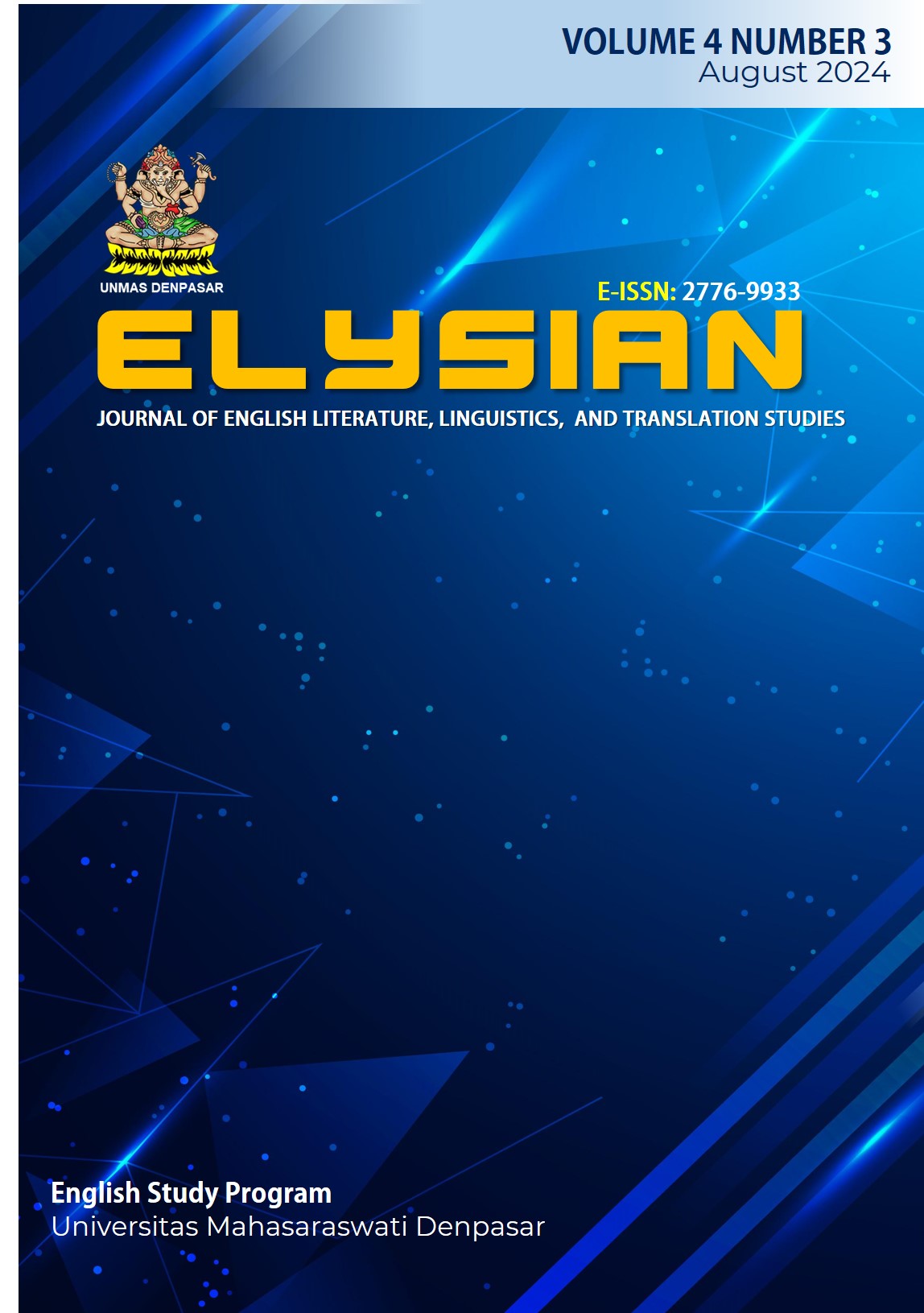An Analysis of Expressive Illocutionary Act Found in Night School Movie
DOI:
https://doi.org/10.36733/elysian.v4i3.7423Abstract
Abstract
Language is an important aspect of communication that is used to interact, speak, and express feelings. Expressive speech acts are typically the facets of speech acts commonly employed in communication. This study examines the significance of expressive illocutionary acts in human communication, focusing specifically on the Night School movie. This study applies a qualitative descriptive approach. In this study, the concept of expressive illocutionary acts proposed by Searle (1979) is used as a theoretical framework that guides the investigations carried out. The purpose of this study is to identify and analyze the various expressive illocutionary acts performed by the characters in the Night School movie. The findings reveal six types of expressive illocutionary acts: thanking, apologizing, congratulating, wishing, attitude, and greeting. Through the application of pragmatics, the study offers insights into the interpretation and understanding of the communicative events within the film, highlighting the importance of expressive illocutionary acts in conveying emotions and shaping interpersonal dynamics. This research contributes to the broader field of pragmatics and provides a framework for analyzing expressive illocutionary acts in film.
Keywords: pragmatics, expressive illocutionary act, night school movie
References
Austin, J. L. 1962. How to Do Things with Worlds. London: Oxford University Press
Yule, G. 1996. Pragmatics. Oxford: Oxford University Press.
Fromkin, V., Rodman, R., & Hyams, N. (2018). An Introduction to Language (w/MLA9E Updates). Cengage Learning.
Searle, J. R. (1979). Expression and meaning: Studies in the theory of speech acts. Cambridge University Press.
Lambert, V. A., & Lambert, C. E. (2012). Qualitative descriptive research: An acceptable design. Pacific Rim international journal of nursing research, 16(4), 255-256.
Mbakop, A. W. N. (2021). The Language of Evangelisation in'Foreign'Territories: The case of Maroua, Cameroon. The International Journal of Language and Cultural (TIJOLAC), 3(2), 29-45.
Candra, K. D. P., Maharani, P. D., & Asih, N. K. A. Y. (2023, July). Expressive Illocutionary Act Found In The Visit Movie. In Prosiding Seminar Nasional Linguistik dan Sastra (pp. 371-378).
Rahmawati, R. D. (2021). An analysis of expressive speech acts used in Crazy Rich Asian movie. Journal of Language and Literature, 9(1), 83-94.
Fanny V, & Hisni, Zia M. (2021). Expressive acts realization in “I Care a Lot” movie. Humanitatis: Journal of Language and Literature, 86.
Prajadewi, D. K., & Tustiawati, I. M. (2022). An Analysis of Expressive Illocutionary Acts Found In Sherlock Holmes: A Game of Shadows. BULLET: Jurnal Multidisiplin I"lmu, 596-603.
Dewi, I Made Rajeg, & I Made Netra. (2016). Commissive and expressive illocutionary acts and their intended meanings in steel’s the cottage. Jurnal Humanis, Fakultas Ilmu Budaya Unud Vol 16.3, 13.








